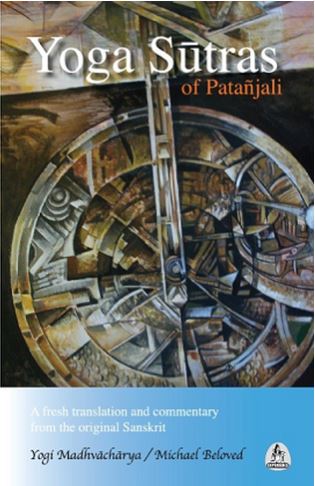Standardized holy books, no matter from what background, that have stood the test of time, books like the Yoga Sutras and Hatha Yoga Pradipika, are so very valuable because they remain a fixed statement. A perfect reference.
They are like pronouncements from a deity or saint, capturing the claim, the formula, in a book form. Our Yoga holy books tell us what has been saved of the ancient yogi - scribe's masterful writings on the subjects. They are an intricate scaffolding through which we receive instruction in its most concise form stated in the flow of the language of the time.
However, due to general lack of insight most of us are unable to elaborate much on the instruction given in the holy book. We sometimes become too sure of our limited interpretation. Or we fumble around with it, turn it around in our block heads with an underlying fear of misinterpreting, re-interpreting or being perceived as just not getting it.
Hence the need for an expert interpreter, a guru commentator on the instruction given from the holy book.
The deity figure who wrote the original book, shouts out a command in the form of the verses we read. The guru, in between myself and the deity figure, receives the same verse, knows (through application) what it means intimately and shouts over to me,
"What he means is this, ........................................!!!!!
Honest gurus are merciful to help us with this material. Lucky for students, there is a pleasure in teaching.
Gurus provide a fast track to understanding. They save our brains from the drudgery of trying to make sense of the statements in the books.
Between pages 55-77 in the Michael Beloved translation and commentary of the Yoga Sutras, we find ourselves sitting with the guru who speaks our language. This section of the book, to me, states what the guru would say to you to get you to understand what the deity or saint was saying. In Part 2 of this book, each verse is said again, not changed, but stated in a way that can possibly penetrate the psyche of the person living today.
I rely on this section of the book and it has helped my comprehension every step of the way. Most of what Patanjali said, no matter how well stated in easy to understand language with elaboration, is beyond the interest or ability of most it seems.
The verse I have been using for my own benefit as well as reading to students at the beginning of class is on page 58 - Chapter 1 verse 34, which reads:
That abstract meditation may be caused by practicing a method of breath manipulation wherein the vital energy of the gross and subtle body is enhanced, causing the creative urges to subside, so that the higher nature is experienced.
This verse sums up what we are in for at the start of a yoga session:
- The goal is the meditation at the end and that is said upfront in this translation.
- He points to breath manipulation as the cause of this meditation.
- During the breath manipulation the bodies are ENHANCED. - Enhancement causes a decrease in one's desirous nature. - At that point, when this is done, the higher nature is perceived.
That’s a good session from start to finish!
I encourage myself and students to make much effort to detect what the translator translated as "enhancements".
What do those enhancements feel like?
Where are they located?
What effect do they have overall?
What parts have I enhanced and what parts are left to be enhanced?




Comments powered by CComment